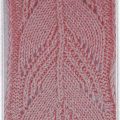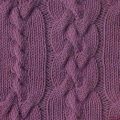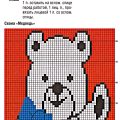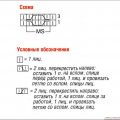
Knitting with knitting needles patterns of voluminous thread. Detailed diagrams with photos and descriptions for beginners
Openwork is an interlacing of loops with formationmultiple through original holes. This technique of knitting is interesting in that it looks every time in a new way, it is only necessary to change the order of tying loops. 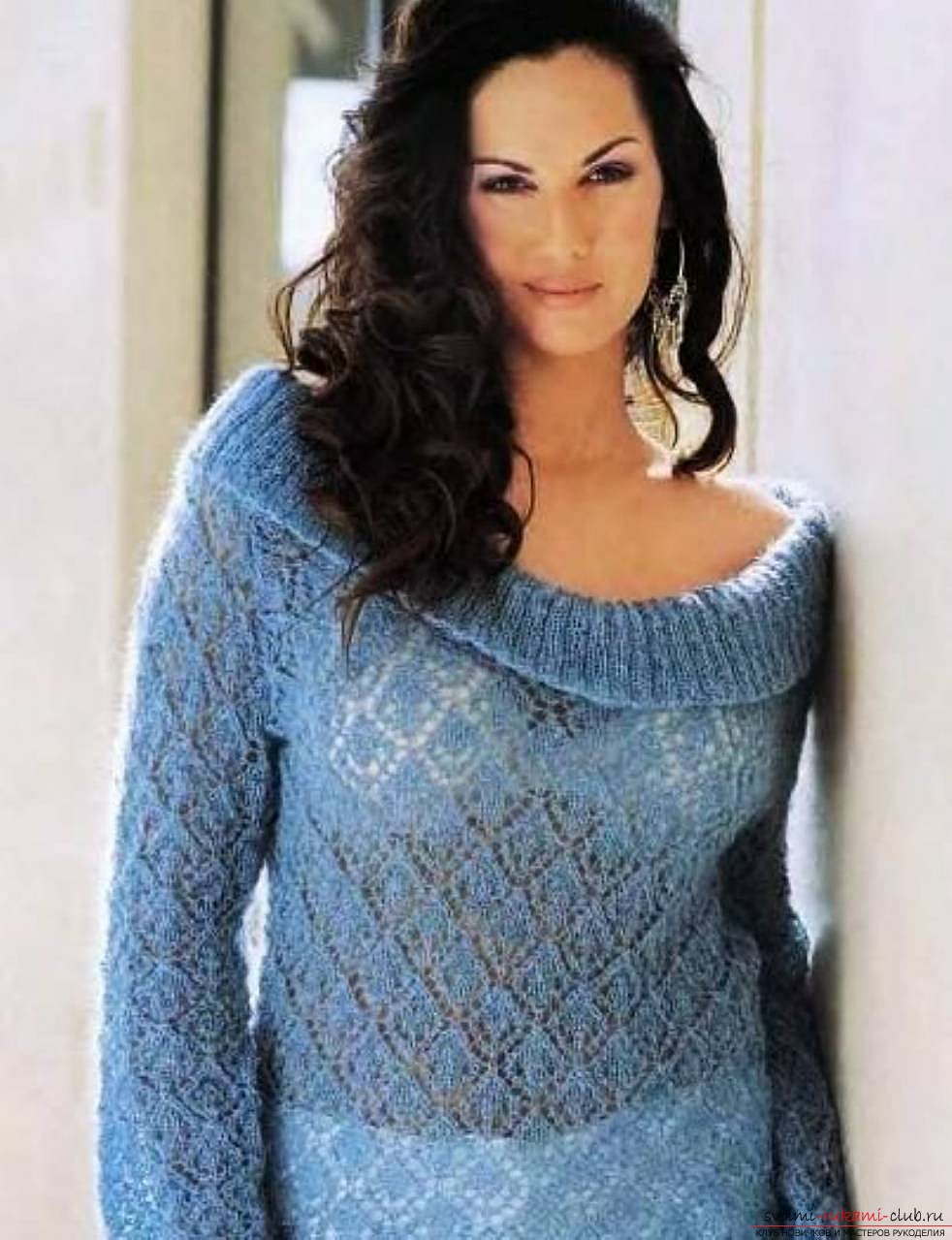 It's already rainy weather outside and for raisingand for free time we usefully take up the entertaining process of knitting openwork patterns. Their diversity will make your imagination work. The choice of the pattern depends entirely on your preference.
It's already rainy weather outside and for raisingand for free time we usefully take up the entertaining process of knitting openwork patterns. Their diversity will make your imagination work. The choice of the pattern depends entirely on your preference.  There's more that any knitted crochet on the knitting needlesthe thing will always look feminine and mysterious. It is possible to create a thing on knitting needles entirely from an openwork or to make it alternating with a variety of strips of braids and plaits. Success in knitting is easily achieved with properly selected yarn.
There's more that any knitted crochet on the knitting needlesthe thing will always look feminine and mysterious. It is possible to create a thing on knitting needles entirely from an openwork or to make it alternating with a variety of strips of braids and plaits. Success in knitting is easily achieved with properly selected yarn. 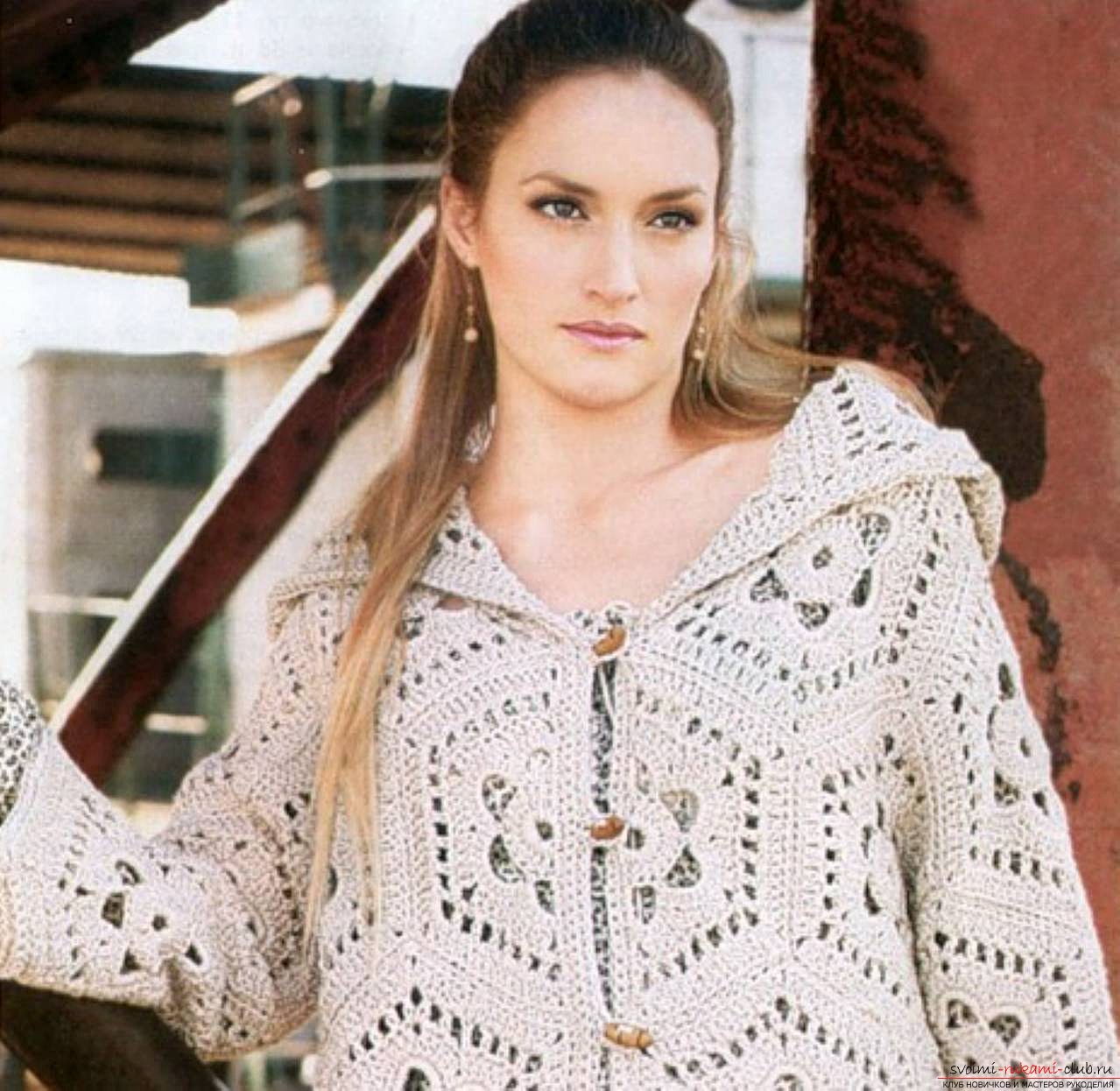 Since not all patterns of openwork patterns can beeasy to change, it is necessary to correctly calculate the right amount of yarn, to get the individual thing of the right size. The yarn should be of good quality and the right footage. For openwork binding well suited acrylic.
Since not all patterns of openwork patterns can beeasy to change, it is necessary to correctly calculate the right amount of yarn, to get the individual thing of the right size. The yarn should be of good quality and the right footage. For openwork binding well suited acrylic.  Before you start knitting, it is worthtry the chosen pattern on several types of yarn, only then buy it. The volumetric thread will be best conveyed by an intricate pattern consisting of unusual holes.
Before you start knitting, it is worthtry the chosen pattern on several types of yarn, only then buy it. The volumetric thread will be best conveyed by an intricate pattern consisting of unusual holes.  We get eighty-five (93) loops on the spokes andwe sew them with a pattern according to scheme 1 (2). At a distance of thirty-four (36) centimeters from the beginning of knitting, we close evenly on both sides of the loop for the armhole. Having connected another twelve (13) centimeters, we close the middle loops for the head cut.
We get eighty-five (93) loops on the spokes andwe sew them with a pattern according to scheme 1 (2). At a distance of thirty-four (36) centimeters from the beginning of knitting, we close evenly on both sides of the loop for the armhole. Having connected another twelve (13) centimeters, we close the middle loops for the head cut. 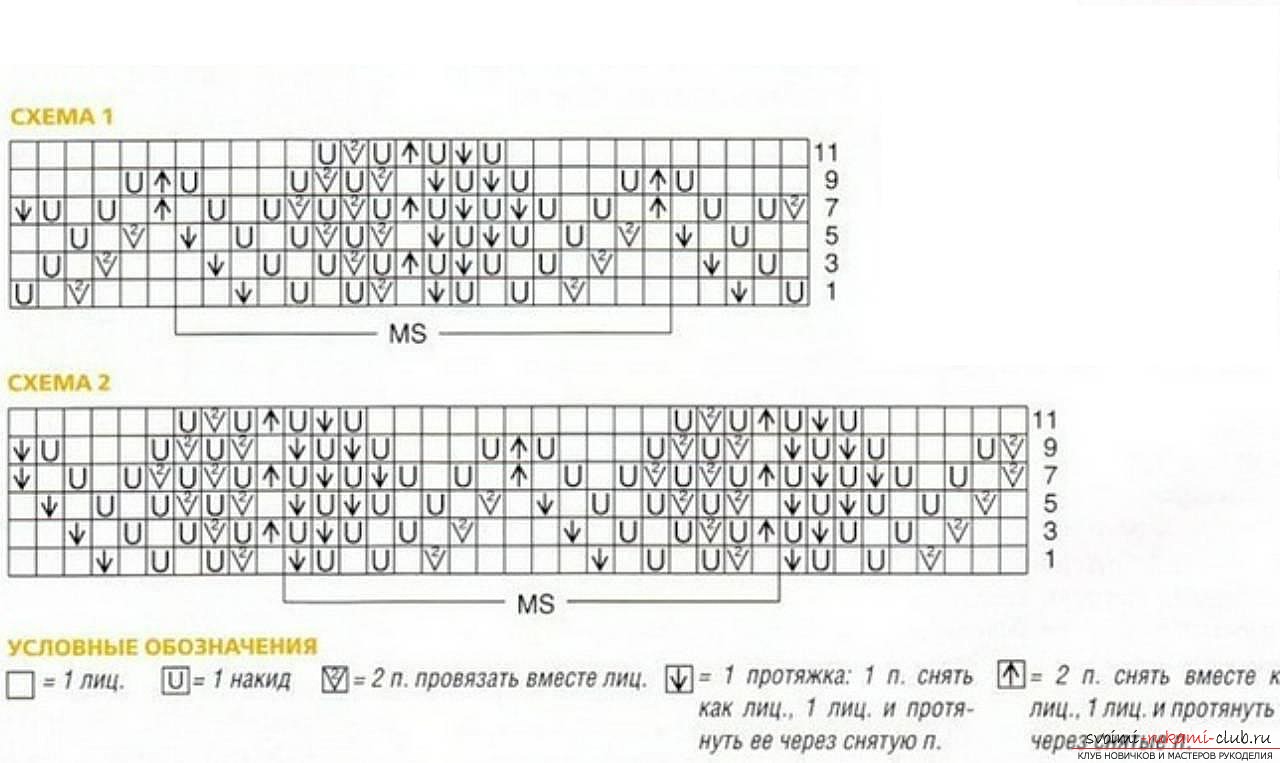 We finish each of the sides separately from each otherfriend. Tightly closing the remaining fourteen (17) shoulder loops and proceeding to create the front part. This part is knitted in a similar way, only a deeper neckline must be made. The hose is knitted on forty-nine (49) loops with a lace pattern according to scheme 1 (1).
We finish each of the sides separately from each otherfriend. Tightly closing the remaining fourteen (17) shoulder loops and proceeding to create the front part. This part is knitted in a similar way, only a deeper neckline must be made. The hose is knitted on forty-nine (49) loops with a lace pattern according to scheme 1 (1).  Adding evenly the bevels, beginning withsixth row. At a distance of nineteen centimeters, we begin by closing the hinges for the sleeve of the sleeve. When there are twenty-one (23) loops left on the spokes, it is difficult to close them with a working thread. The second sleeve is identical.
Adding evenly the bevels, beginning withsixth row. At a distance of nineteen centimeters, we begin by closing the hinges for the sleeve of the sleeve. When there are twenty-one (23) loops left on the spokes, it is difficult to close them with a working thread. The second sleeve is identical. 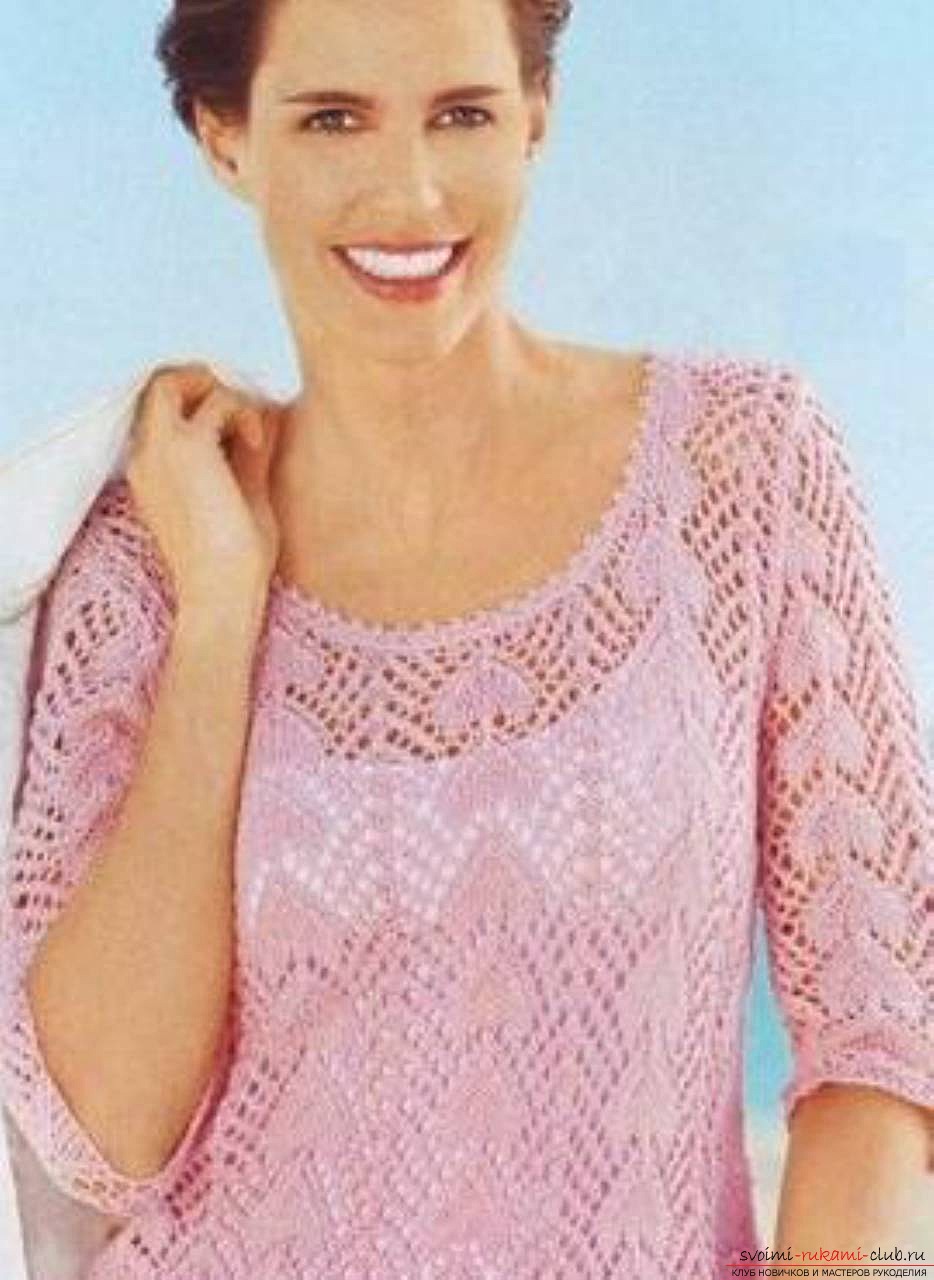 Sew the front and back of the shoulders. At the edge of the neck we tie a rubber band two centimeters. We sew the sleeves and perform the remaining side and sleeve seams. The openwork pink blouse is ready.
Sew the front and back of the shoulders. At the edge of the neck we tie a rubber band two centimeters. We sew the sleeves and perform the remaining side and sleeve seams. The openwork pink blouse is ready.
